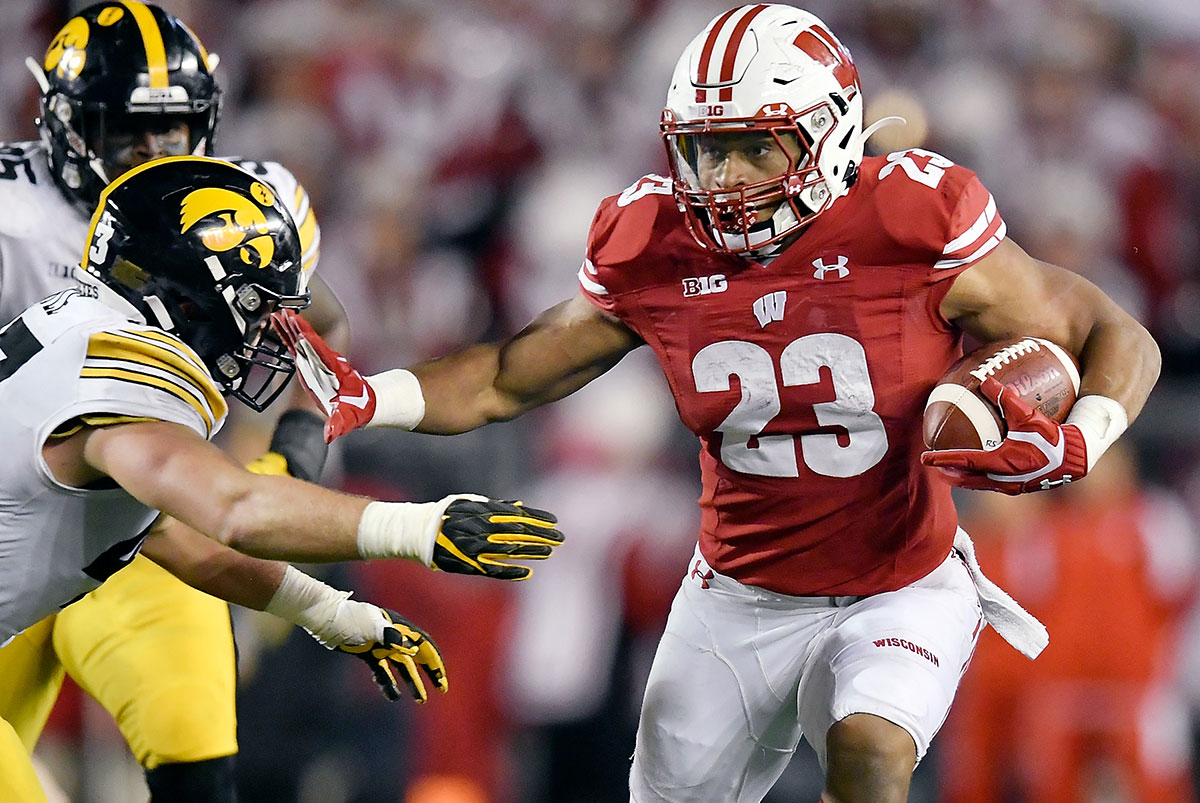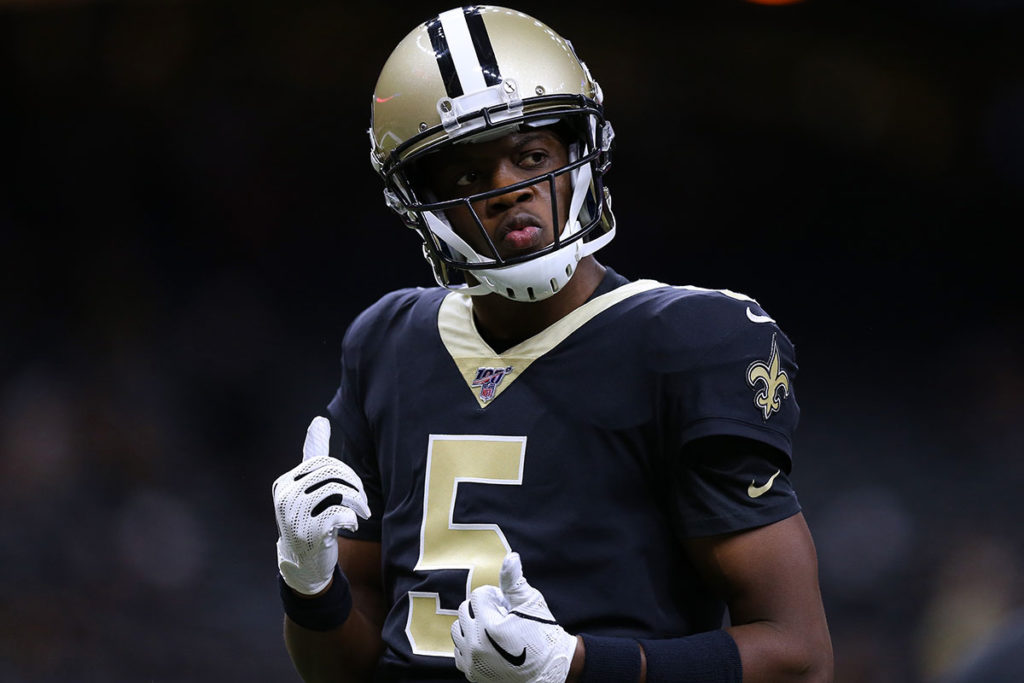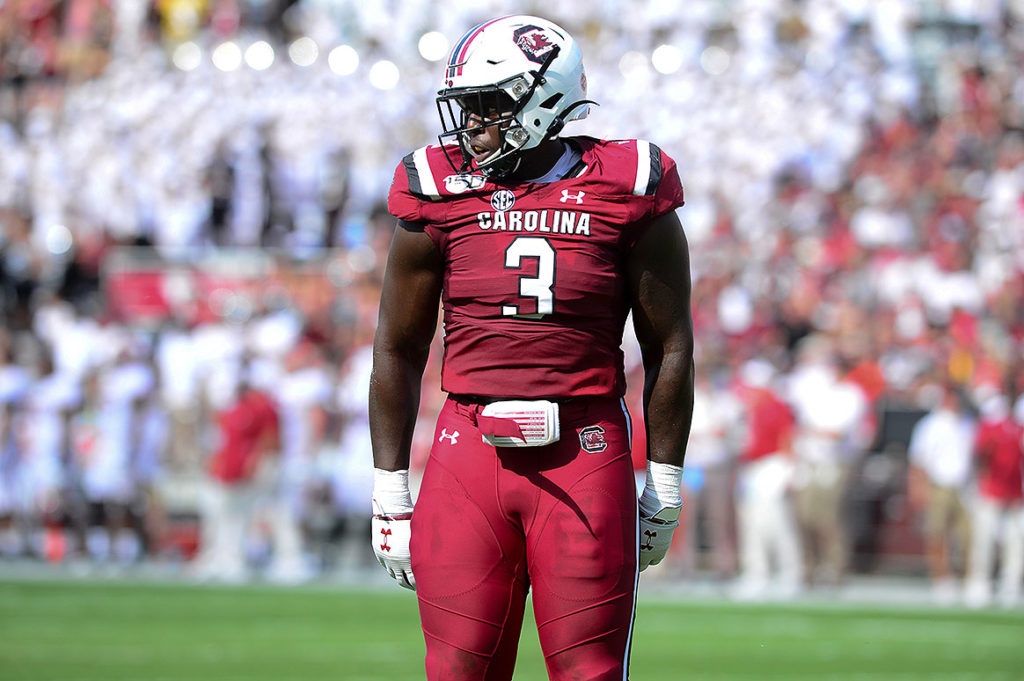FAB 2. Bucs Should Flood The RB Position
There are a lot of folks that simply don’t believe in using premium draft picks on running backs, especially with the way the NFL has evolved into a passing league.
Drafting a running back in the first round is blasphemy.
Critics like those in the analytics world who believe that running the ball is a waste of time and that passing on every play is the right strategy (these are the same folks that don’t believe in concepts like “momentum” and “physically wearing down a defense” because real aspects of football like that can’t be measured with a statistic) point to this past year’s Super Bowl that featured two undrafted running backs in San Francisco’s Raheem Mostert and Kansas City’s Damien Williams.
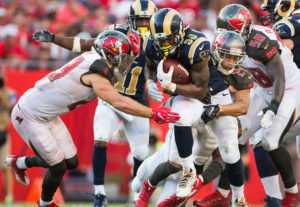
Rams RB Todd Gurley – Photo by: Getty Images
But what about the previous year’s Super Bowl that featured New England’s Sony Michel and Los Angeles’ Todd Gurley – two former first-round picks?
Drafting running backs like Gurley, Dallas’ Ezekiel Elliott, Carolina’s Christian McCaffrey and New York’s Saquon Barkley in the first round isn’t a crime.
What is a crime – almost always – is paying top dollar for running backs in free agency. By the time a running back hits his second contract in the league he’s usually somewhere between 25-26 in age with about four or five more years of shelf life left due to the punishment runners absorb throughout their careers.
Here is a list of the Top 5 highest-paid running backs in the league last year.
TOP 5 HIGHEST-PAID RBs IN 2019
Cowboys RB Ezekiel Elliott – $15 million
Rams RB Todd Gurley – $14.375 million
Jets RB Le’Veon Bell – $13.125 million
Cardinals RB David Johnson – $13 million
Falcons RB Devonta Freeman – $8.25 million
Elliott has been worth the money as he was the league’s fourth-best rusher in 2019. Gurley has a bad knee and after back-to-back years with over 1,200 yards rushing his production slipped to 857 yards last year. The Rams are so concerned that they drafted Darrell Henderson in the second round to be Gurley’s eventual replacement.
The Bell signing was a disaster for the Jets as he rushed for just 789 yards and scored four total touchdowns. To put that in perspective, Ronald Jones II was just as productive in Tampa Bay and costs about $12.5 million less.
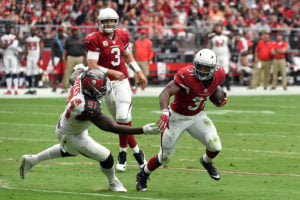
Cardinals RB David Johnson – Photo by: Getty Images
Meanwhile, the Cardinals would like to unload Johnson, who had 345 yards rushing and two TDs, and the Falcons want to dump Freeman, who had just 656 yards and two touchdowns last year. Two high-priced veteran backs not even close to earning their paychecks.
Drafting a running back – even in the first round – makes sense for one reason if the player isn’t a bust.
The rookie contract.
Take a look at the Top 5 leading rushers in 2019 along with their respective average salaries.
TOP 5 NFL RUSHERS IN 2019
Titans RB Derrick Henry – 1,540 – $1.352 million avg.
Browns RB Nick Chubb – 1,494 yards – $1.846 million avg.
Panthers RB Christian McCaffrey – 1,387 yards – $4.31 million avg.
Cowboys RB Ezekiel Elliott – 1,357 yards – $15 million avg.
Seahawks RB Chris Carson – 1,230 yards – $616,285 avg.
Henry, Chubb, McCaffrey and Carson are all on their rookie deals. It’s too soon to tell if Chubb and McCaffrey will be re-signed by their respective teams like Elliott was, but my current guess would be “yes.”
The bigger question will be “which NFL team will pay Henry a king’s ransom?” Followed up by “will he be worth it?” Titans veteran backup running back Dion Lewis averaged more money per year at $4.95 million than Henry did last season. Lewis didn’t even total 400 total yards and scored just one TD.
What is not in question is whether or not Seattle will pay Carson when he’s a free agent in 2021. The Seahawks won’t.
They’ll play it smart and let him head into free agency because of head coach Pete Carroll’s model of draft and release at the running back position. It’s a model I would love to see general manager Jason Licht adopt in Tampa Bay and use for a few reasons.
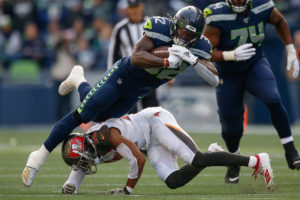
Seahawks CB Chris Carson and Bucs FS Andrew Adams – Photo by: Getty Images
First, Seattle has been one of the league’s best rushing teams since Carroll took over in 2010. The Seahawks had a 4,000-yard Pro Bowl passer in Russell Wilson in addition to the NFL’s fourth-best rushing attack in 2019, averaging 4.6 yards per carry and 137.5 yards per game while finishing 11-5. Two years ago, the Seahawks led the league in rushing with 160 yards per game, while averaging 4.8 yards per carry en route to a 10-6 record.
When Seattle lost the Super Bowl in 2014 to New England, the 12-4 Seahawks had the league’s best rushing attack, averaging 172.6 yards per game and 5.3 yards per carry. Carroll got crucified for not running Pro Bowl running back Marshawn Lynch in from the 1-yard line against New England. Instead, Carroll elected to pass the ball and Wilson’s slant was picked off in the end zone by Patriots cornerback Malcolm Butler.
The previous year when Seattle beat Denver in the Super Bowl, the 13-3 Seahawks had the league’s fourth-ranked ground game, averaging 136.8 yards per game and 4.3 yards per carry. Simply put, Seattle can run the ball and the league’s top-ranked run defense saw that first hand this past season when Carson became the only running back to rush for 100 yards against Tampa Bay.
Second, Carroll has helped the Seahawks’ salary cap by not tying up a big chunk of cap space on a big-money running back. Instead, he’s spent money more wisely on the offensive and defensive lines, in the secondary and at quarterback. In fact, Carson, who led Seattle in rushing and had the fifth-highest rushing yardage in 2019, was the Seahawks’ sixth-highest paid running back last year behind Travis Homer ($665,840), C.J. Prosise ($778,116), Robert Turbin ($805,000), Marshawn Lynch ($1,030,000) and Rashaad Penny ($2,691,359), which is incredible.

San Diego State RB Rashaad Penny – Photo by: Getty Images
And third, by flooding the running back positions nearly every year in the draft, Carroll and the Seahawks always have a solid stable of backs and replacements waiting in the wings. When Carson hits free agency in 2021 after his contract year this season, he’ll be replaced with Penny, the team’s first-round pick in 2018, Homer, Prosise or another running back that Carroll could draft in 2020.
No team has drafted more running backs over the last eight years than Seattle with 10. The only year that Seattle didn’t draft a rusher was in 2015, but then proceeded to select three in the 2016 draft.
SEAHAWKS RBs DRAFTED SINCE 2012
Travis Homer – 6th round, 2019
Rashaad Penny – 1st round, 2018
Chris Carson – 7th round, 2017
C.J. Prosise – 3rd round, 2016
Alex Collins – 5th round, 2016
Zac Brooks – 7th round, 2016
Kiero Small – 7th round, 2014
Christine Michael – 2nd round, 2013
Spencer Ware – 6th round, 2013
Robert Turbin – 4th round, 2012
Licht has only drafted three running backs since taking over Tampa Bay’s drafts in 2014. He selected Charles Sims in the third round that year, used a fifth-round pick on Jeremy McNichols in 2017 and drafted Jones in the second round in 2018. Those are four fewer rushers than Seattle has drafted during that span.

Former Bucs head coach Dirk Koetter and GM Jason Licht – Photo courtesy of the Tampa Bay Buccaneers
Granted, Licht had just re-signed Doug Martin to a mega-deal worth $35 million over five years, and with Sims still on the roster through 2017, the Bucs didn’t have a huge need at the running back position. But after signing that contract extension in 2016, Martin slumped hard, dealt with injuries, got suspended and is now out of the league at age 29. It ended up being a terrible deal for Licht and the Bucs, who cut Martin after the 2017 campaign. Sims’ rookie contract expired after the 2017 season, and wasn’t re-signed. In fact, no team signed Sims, who was out of the NFL at age 27.
Licht had to hit the reset button at the position in 2018 because the team didn’t have anyone other than undrafted free agent Peyton Barber waiting in the wings to step up. Now, two years later, Tampa Bay looks ready to move on from Barber, who is just an average running back.
To prevent this from happening again, it’s time for Licht to flood the running back position by drafting two this year, and then commit to drafting a rusher every two years. That way if Jones becomes a 1,000-yard back within the next two years, Licht can let him go in free agency and let some team overpay him while Tampa Bay rakes in a compensatory draft pick.
Then one of the running backs the Bucs draft this year – or in the next two years – will be ready to step up and replace Jones – all on rookie contracts.
Just like Seattle.
Flooding the running back spot in the draft also adds to the competition at the position, provides some cover if Licht whiffs on a draft pick like McNichols, and provides depth in case there are injuries.
Despite Carroll’s best attempt at stockpiling running backs, injuries mounted this year in Seattle as Prosise, Penny and Carson were all placed on injured reserve and the Seahawks were forced to sign Turbin and Lynch.
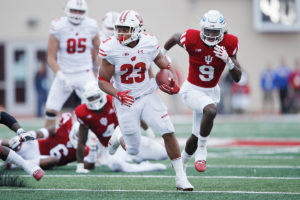
Wisconsin RB Jonathan Taylor – Photo by: Getty Images
Imagine if Jones were to go down with a season-ending injury? Tampa Bay’s ground game would go from bad to worse.
Licht needs to prepare for that and plan on drafting two running backs this year, just as I proposed in the latest PewterReport.com Bucs’ 7-Round Mock Draft with Wisconsin’s Jonathan Taylor in the first round and Memphis’ Antonio Gibson in the fourth round. Flood the running back position in Tampa Bay to create competition in the backfield now, and to avoid paying top dollar for a running back in free agency down the road.
Scott Reynolds is in his 30th year of covering the Tampa Bay Buccaneers as the vice president, publisher and senior Bucs beat writer for PewterReport.com. Author of the popular SR's Fab 5 column on Fridays, Reynolds oversees web development and forges marketing partnerships for PewterReport.com in addition to his editorial duties. A graduate of Kansas State University in 1995, Reynolds spent six years giving back to the community as the defensive coordinator/defensive line coach for his sons' Pop Warner team, the South Pasco Predators. Reynolds can be reached at: [email protected]

